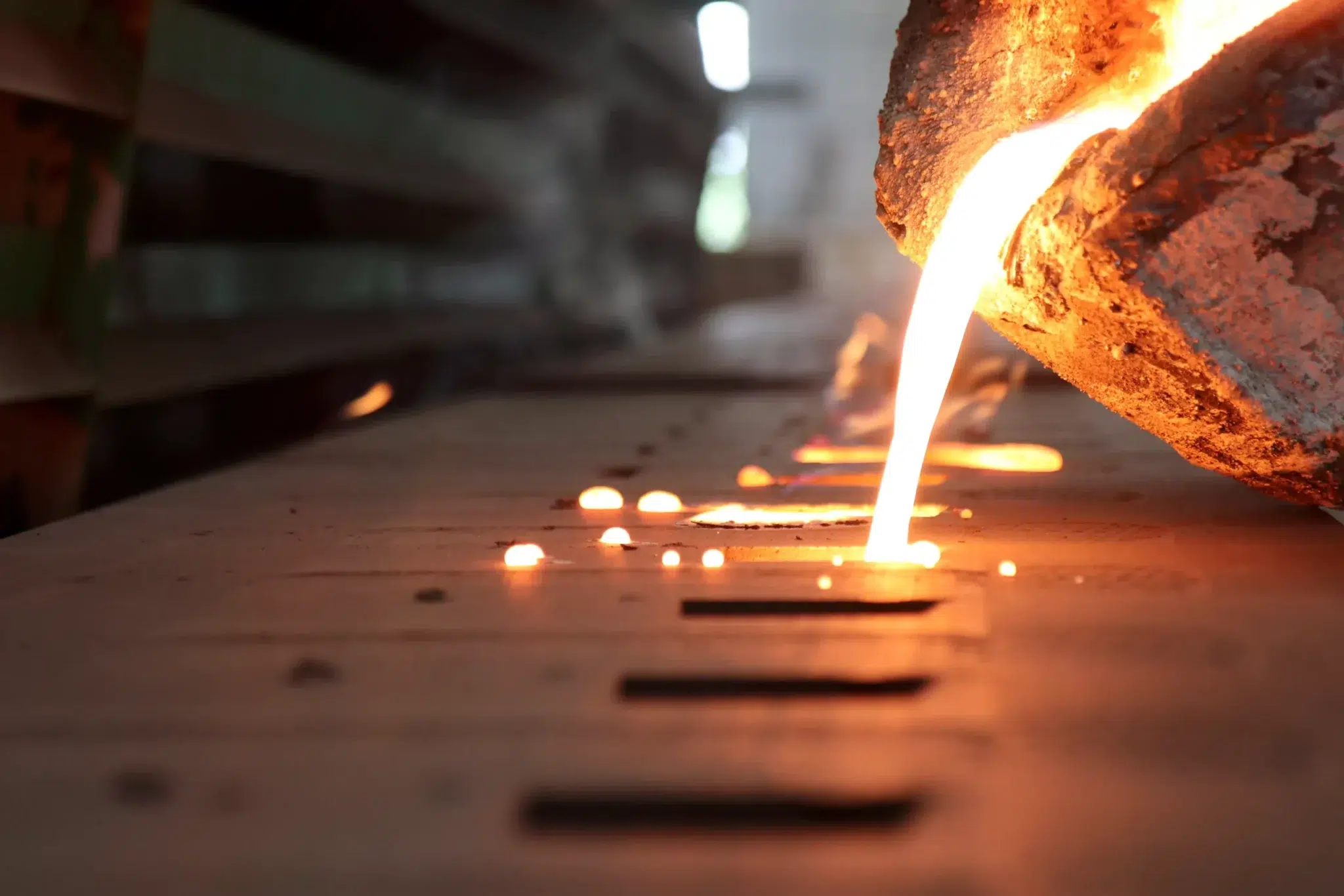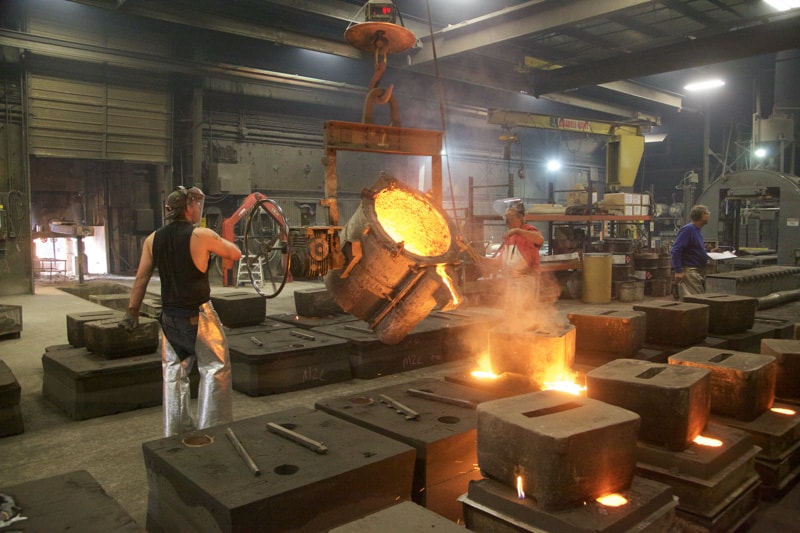How Casting Foundry Advancements Advance Global Sustainability Goals
Wiki Article
Discovering the Vital Function of Casting Foundry in Modern Manufacturing
Casting foundries are critical in contemporary production, supplying important elements throughout varied industries. Casting Foundry. Their capability to create elaborate, lightweight components satisfies the expanding needs for efficiency and top quality. Nevertheless, the landscape is advancing, affected by technological innovations and sustainability issues. As these shops navigate opportunities and obstacles, their future function in production continues to be unsure. What techniques will they employ to prosper and adjust in this dynamic setting?The Fundamentals of Spreading: Recognizing the Process
Spreading has been a fundamental production process for centuries, its principles continue to be vital to contemporary market. This procedure involves pouring a liquid material, generally metal, right into a mold and mildew to develop a specific shape. The mold is created to create the desired final result, which solidifies as it cools. Secret phases in casting include pattern making, mold development, putting, and ending up. Each phase calls for careful interest to detail, making sure that the final product satisfies high quality and dimensional requirements.The convenience of Casting permits for the manufacturing of intricate geometries that would be difficult or impossible to accomplish through other producing techniques. Furthermore, Casting can fit a range of products, consisting of polymers and steels. This flexibility makes it an important method for industries ranging from automotive to aerospace, supporting advancement and performance in the creation of components that satisfy the demands of contemporary applications.
Kinds Of Casting Strategies and Their Applications
Casting strategies vary, each tailored for particular applications and material needs. Sand Casting is among the oldest approaches, appropriate for complex geometries and huge parts, utilizing sand mold and mildews. Investment casting, recognized for its precision, is optimal for elaborate designs and is frequently utilized in aerospace and clinical markets. Die casting, frequently used for high-volume production, enables fast manufacturing of smaller sized parts with excellent surface coating, usually in aluminum or zinc alloys. Shell Casting offers an equilibrium in between the two, giving fine information and great strength, making it prominent in automotive applications. Irreversible mold spreading, utilized for non-ferrous steels, provides a tighter dimensional tolerance and far better mechanical residential or commercial properties. Finally, centrifugal Casting is reliable for producing round components, commonly found in tubes and pipes - Casting Foundry. Each technique serves distinctive purposes, emphasizing the flexibility and significance of Casting in modern productionThe Influence of Casting Shops on Industry Development
As sectors undertaking for greater effectiveness and item top quality, the duty of casting foundries becomes progressively crucial in driving innovation. These facilities act as the backbone for creating complicated elements throughout different fields, consisting of auto, aerospace, and power. By leveraging sophisticated Casting strategies and products, shops add to the development of lighter, more powerful, and extra sturdy items that fulfill advancing customer needs.
Furthermore, factories help with making use of lasting methods, such as recycling steel and decreasing waste, which straightens with contemporary industry criteria for ecological duty. Inevitably, the innovative abilities of casting factories not just enhance producing effectiveness yet also drive whole industries into a future defined by technical innovation and sustainability.

Challenges Facing Casting Shops in a Modern Economy
While innovation continues to improve the manufacturing landscape, casting foundries encounter a myriad of difficulties that threaten their functional feasibility. One considerable issue is the raising competition from advanced production innovations, such as additive manufacturing, which can generate complicated parts with less product waste. Additionally, the rising and fall costs of raw materials, particularly steels, position financial threats, affecting cost predictability. Labor scarcities additionally worsen these challenges, as skilled employees become harder to locate and maintain amidst an aging workforce. Governing stress regarding emissions and office safety and security require shops to spend in expensive upgrades, commonly straining restricted sources. The demand for digital improvement additionally looms big, as several foundries struggle to embrace Sector 4.0 technologies that enhance effectiveness and information management. Collectively, these difficulties urge casting foundries to adapt quickly or take the chance of obsolescence in an increasingly open market.Sustainability Practices in Casting Foundries
Among the obstacles confronting Casting foundries, the adoption of sustainability practices has emerged as a necessary approach for enhancing operational durability and competitiveness. Foundries are increasingly concentrating on decreasing waste with effective resource administration, reusing scrap steel, and making use of eco-friendly materials in their processes. The implementation of energy-efficient innovations is one more important facet, as it aids reduced power usage and carbon emissions.Lots of foundries are embracing closed-loop systems to decrease water usage and lower the environmental effect of procedures. Employee training in sustainable methods cultivates a culture of ecological duty, making certain that all group members are engaged in sustainability campaigns.
Integrating Innovation in Casting Processes
Integrating innovative modern technologies into casting processes has actually ended up being a pivotal consider driving effectiveness and innovation within shops. Automation and robotics are progressively employed to enhance production, reducing labor prices and lessening human error. Advanced software application for simulation and modeling allows designers to anticipate outcomes and enhance styles prior to physical production begins. In addition, the consolidation of 3D printing modern technology considerably improves the prototyping stage, facilitating fast growth and decreasing preparations.Additionally, real-time surveillance systems utilizing IoT tools allow shops to track performance metrics and recognize prospective concerns early in the Casting process. This data-driven strategy not just boosts quality assurance but likewise sustains maintenance methods that prevent expensive downtimes. Therefore, incorporating these technologies promotes an extra agile manufacturing environment, enabling foundries to respond promptly to market demands while keeping high criteria of quality and sustainability.
The Future of Casting Foundries in Production

Moreover, the need for high-performance and lightweight products in markets like aerospace and automobile will drive innovation within foundries. Partnerships in between producers and shops will likely boost, fostering a more integrated supply chain that stresses fast prototyping and personalization. As digital improvement continues, shops may also take advantage of data analytics to maximize operations and forecast maintenance demands, making certain competition. Inevitably, the future of casting shops pivots on their capacity to adapt to technical advancements and market demands while preserving top quality and cost-effectiveness.
Frequently Asked Concerns
What Products Are Generally Utilized in Casting Foundries?
The products generally used in casting factories consist of metals such as aluminum, iron, steel, and bronze, together with numerous alloys. In addition, sand, material, and ceramic are frequently utilized for molds and core production.How Do Casting Foundries Guarantee Quality Assurance in Manufacturing?
Casting factories apply strenuous top quality control measures, consisting of normal inspections, standardized screening, and adherence to sector qualifications. These Casting Foundry techniques assure that each item fulfills defined tolerances and performance requirements, therefore maintaining high levels of reliability and client contentment.What Are the Safety Measures in Casting Foundries?
Security steps in casting foundries consist of using personal safety devices, proper ventilation systems, regular tools upkeep, worker training programs, and adherence to safety regulations to decrease threats connected with liquified metal handling and equipment operation.
For how long Does the Casting Process Usually Take?
The Casting process normally takes several hours to numerous days, depending upon factors such as the intricacy of the design, the products used, and the cooling time needed for the cast elements to strengthen appropriately.What Is the Function of Designers in Casting Foundries?
Engineers in casting shops manage design, procedure optimization, and quality assurance. They ensure that materials satisfy requirements, troubleshoot manufacturing issues, and execute cutting-edge strategies, eventually adding to efficiency and the successful construction of metal components.Casting foundries are critical in contemporary production, supplying important elements throughout varied sectors. While technology continues to reshape the manufacturing landscape, casting factories deal with a myriad of challenges that threaten their functional stability. Among the challenges challenging Casting factories, the fostering of sustainability methods has arised as a necessary method for enhancing operational durability and competitiveness. In enhancement, real-time tracking systems utilizing IoT gadgets allow foundries to track efficiency metrics and identify prospective issues early in the Casting process. The materials commonly used in casting factories consist of steels such as aluminum, bronze, steel, and iron, along with various alloys.
Report this wiki page